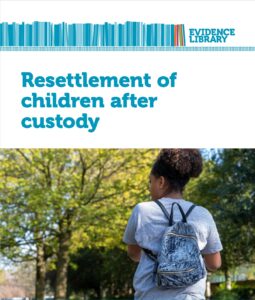This is the fourth in a short series of posts exploring the final annual report of Prison Chief Inspector Nick Hardwick published on 14 July 2015. This post looks at Hardwick’s findings from the inspections of young offender institutions and secure training centres.
Children in custody
The one piece of good news from the report is that the number of young people held in custody continued to decline with the number of boys held in YOIs in England and Wales down from 858 on 31 March 2014 to 792 one year later.
However, inspectors made a number of criticisms of YOIs about the circumstances in which these children are held. There are five main conclusions:
- Fights and assaults, including assaults on staff, were frequent.
- Living conditions had generally improved.
- Time out of cell was poor.
- The reduction in establishments meant that more young people were held far from their home, with effects on their family contact and prospects for resettlement.
- Boys were regularly uncertain about where they would be living on their release
[divider]
Violence and anti-social behaviour
Inspectors reported that nearly a third of boys had felt unsafe in their establishment, and 10% said they felt unsafe at the time of the survey.
At Feltham, there had been 262 fights and assaults in the six months before the inspection, including 79 assaults on staff, a much higher level than usual. At Cookham Wood there were about 15 assaults a month between children compared with nine at the previous inspection. At both establishments, there were group assaults on individual boys, with often reckless and unpredictable violence.
Inspectors were also critical of attempts to tackle this violence which included locking up boys for long periods of time in their cells, basically solitary confinement. Over a quarter (28%) of boys at both Cookham Wood and Feltham (26%) were on some form of regime restriction.
[divider]
Living conditions and relationships
Inspectors found a mixed picture in respect of living conditions – previously poor living conditions at Feltham and Werrington had been improved and newly opened accommodation at Cookham Wood was excellent. However cells at Hindley and Parc were cramped.
Relationships between boys and staff were reasonably good, but black and minority ethnic and Muslim boys were more negative and were less likely to say staff treated them with respect compared with white and non-Muslim boys. Inspectors continued to find examples of staff failing to challenge poor behaviour and acting as poor role models. Personal officer schemes did not always work, and at Feltham, 25% of boys said they had no one to turn to if they had a problem.
[divider]
Time out of cell
It was pretty shocking to read that at only one YOI inspected last year (Parc) were children out of their cells for 10 hours a day – and even this didn’t happen at the weekend. Inspectors found the same poor situation with getting outside every day – rarely achieving expectations of at least one hour a day – some had as little as 15 minutes.
When boys were out of their cells, inspectors found that education and training were good at most establishments.
[divider]
Separation from families
The downside of the reduction in the number of children in custody was that some establishments had been closed (there are now just five YOIs still holding under 18s) with the result that more boys were held a very long way from their families. Only a third (35%) of boys in YOIs said it was easy for their families or friends to visit them. The inspectors urged establishments to look at new ways of helping children in custody keep contact with their families.
[divider]
Resettlement
Inspectors found that all the establishments had a problem with securing suitable accommodation for some boys on their release, for example Werrington had identified that one-fifth of children were released to non-sustainable accommodation. Inspectors regularly found boys concerned that they would have nowhere to go to and would not be released, or would be released to unsuitable accommodation and recalled if they left it.
In a few cases, boys were placed into hostel or bed and breakfast accommodation, which inspectors felt was likely ‘to give them a pretty certain return ticket’. Finding accommodation was often a particular problem for boys who had previously been in care.
[divider]
Conclusions
Although inspectors did not find the rapid deterioration of conditions they found in the men’s estate, they certainly didn’t find the improvements taking place in women’s prisons. The Chief Inspector again attributed some of the difficulties to cuts in staff numbers. Given the reduction in the number of children in custody, it should be an achievable goal for new Justice Secretary Michael Gove to turn the situation around.








